
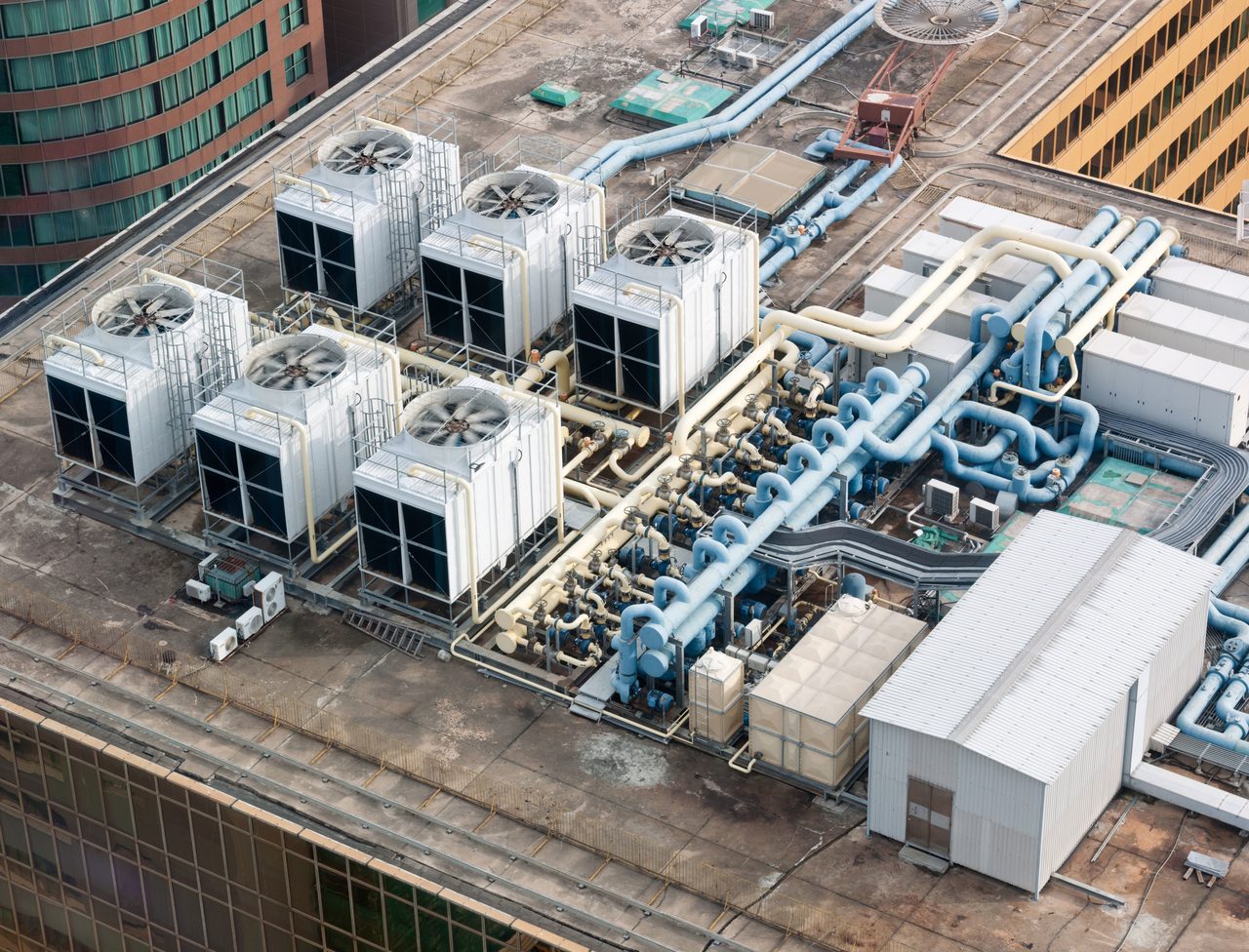
Feature
Evaluating the True Value of IAQ in Commercial Buildings
IAQ must be prioritized from both a financial and moral perspective.
Now, more than ever, building occupants need and want reassurance that owners and operators of the buildings in which they’re working are making occupant health and wellness a priority. IAQ is a critical part of occupant health and wellness, and this goes far beyond concerns related to COVID-19. Better IAQ is directly related to increased levels of cognitive function and overall human health.1
There are multiple factors that impact the IAQ in a building, some of which building owners can control, and others they cannot. For example, a building owner in northern California does not have direct control over the forest fire that is blowing smoke toward the outdoor air intakes of the building. However, the owner can control the air treatment devices that are provided as part of the ventilation system to help mitigate the negative impacts of smoke in the ventilation airstream.
This article focuses on the factors we can control. It discusses the impact of IAQ on building occupants, outlines methods for identifying and measuring factors that could have negative effects on IAQ, summarizes guidance to prevent and/or mitigate those factors, and discusses best practices in the industry as it relates to HVAC design and retrofit to optimize for IAQ. While many of these best practices have recently been highlighted as critical to help prevent the spread of COVID-19, they should become standard practice to provide and maintain optimal IAQ in our commercial buildings.
Why Does it Matter?
The Harvard T.H. Chan School of Public Health has conducted three studies that identify a direct correlation between indoor environmental quality and cognitive function. The studies suggest higher levels of ventilation and lower levels of harmful gases and particulates (i.e., CO2, VOCs, and PM2.5) result in higher cognitive function, fewer health symptoms, better sleep, and other health benefits for building occupants.2,3,4
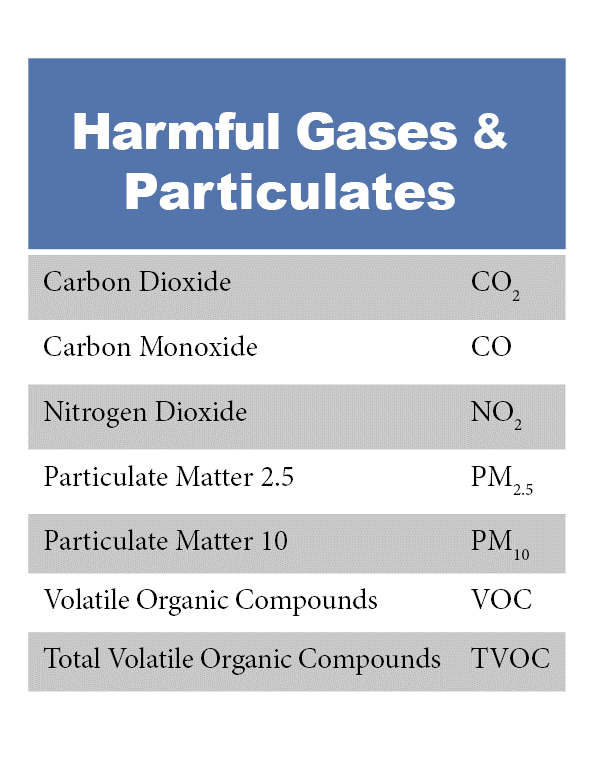
FIGURE 1: A glossary of IAQ-related terms.
In the first study (2015), scientists discovered cognitive scores were 61% higher in building conditions with reduced VOC levels and 101% higher in building conditions with increased ventilation.2 In the second study (2016), it was found that utilizing a holistic approach to the design and operation of a healthy building (including design and operational elements beyond, and those that impact, ventilation and levels of CO2, VOCs, and PM2.5) positively impacts overall health and well-being. Occupants of green-certified, high-performing buildings saw 26% higher cognitive function scores, slept better, and reported fewer health symptoms compared to those in similarly high-performing buildings that were not green-certified.3
In the final study (October 2021), scientists found there is a direct relationship between ventilation rates and cognitive function, as ventilation impacts levels of PM2.5 and CO2 exposure. They concluded that higher ventilation rates and enhanced filtration are important public health strategies to increase building occupants' cognitive function while protecting occupants from the harmful effects of indoor pollution.4
With these findings in mind, a discussion about why building occupant health should be prioritized from both moral and business perspectives is a topic for another article, but it goes without saying that building owners, operators, designers, and occupants should be thinking about IAQ. In commercial buildings, IAQ is an important topic that must be given the attention it deserves.
Ventilation
As revealed most clearly in the third Harvard study (2021), the relationship between increased ventilation and better cognitive function is apparent. For new commercial buildings, design teams can proactively design systems to operate, or be capable of operating, with ventilation levels that exceed local codes and standards. While it is up to the design team to determine what increased ventilation looks like for the project since HVAC design will be impacted, there are several third-party sustainable and healthy building rating systems that provide suggested levels of increased ventilation. Figure 2 lists a number of these third-party rating system ventilation requirements in order from most to least stringent.
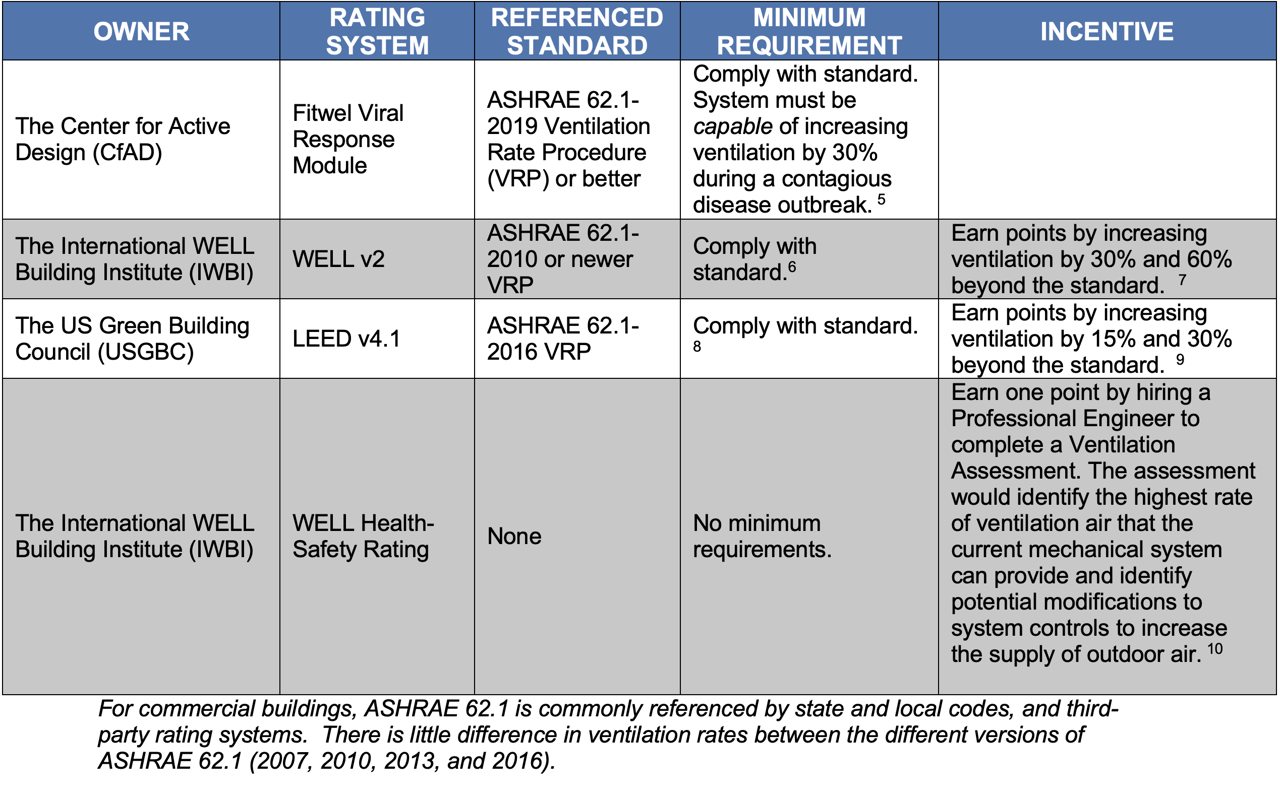
FIGURE 2: Third-party rating system ventilation requirements, listed in order from most to least stringent.
But what about existing buildings? Does current building ventilation meet current code minimum ventilation levels? Are the systems capable of providing additional ventilation? To answer these questions, one must first understand how the system is currently operating as well as how it was designed to operate. Test and balance (TAB) and retro-commissioning (RCx) can provide information about ventilation rates and controls. If ventilation levels are lower than desired or lower than what the system was originally designed to provide, additional engineering analysis must be done, as there are many other variables to consider, including equipment conditions and capabilities, existing duct design and capacity, control sequences (if they exist), etc.
Newcomb & Boyd’s Healthy Buildings team recently completed a series of assessments for a large property manager in the Southeast. The purpose of the assessments was to review existing ventilation system design, installation, and function to determine current ventilation levels, evaluate a system's capability to provide additional ventilation, and identify other measures that could be implemented. From a ventilation perspective, recommendations included the modification of HVAC control sequences, replacement of HVAC control systems, alteration or replacement of ventilation equipment, retro-commissioning of HVAC systems, and, in some cases, a redesign of the entire ventilation system. Recommendations related to filtration and air cleaning are discussed later in this article.
Pollutants that Affect IAQ and How To Rectify
Maintaining adequate ventilation is certainly an important part of managing commercial building IAQ, but several other things should be considered. There are many other pollutants and gases that impact IAQ, including those studied in the aforementioned Harvard studies (CO2, VOCs, and PM2.5) as well as CO, PM10, ozone, NO2, radon, and others. They come into buildings from outside sources (e.g., vehicular exhaust, industrial plants, smoke, general ambient air pollution) as well as inside sources (e.g., people, furniture, finishes, combustion sources, cleaning products)11 and should be mitigated via filtration and air cleaning as well as thoughtful selection of materials and products brought into the building.
Outdoor Air: Understanding the outdoor air quality at the project location is an important first step when determining the level of filtration and type of air cleaning that should be considered. In many cases, it’s a code requirement. Per ASHRAE 62.1-2019 Section 6.1.4, Outdoor Air Treatment, buildings located in areas where the national standard or guideline for PM10, PM2.5, or ozone is exceeded must meet specific requirements related to filtration and/or air cleaning.12 Local ozone and PM readings can be obtained from the U.S. Environmental Protection Agency’s (EPA’s) AirNow site13, which has air quality readings available for most areas, but if the project is located near a major pollutant source (e.g., an industrial site, rail yard, or highway), it is recommended that an industrial hygienist, or other qualified professional, come to the site to test the ambient air for other particulates and gases.
Once local outdoor pollutant types and levels are understood, design teams can develop a plan to utilize the appropriate filtration and air cleaning to mitigate the identified pollutants/gases. For example, if ambient air quality data or testing were to reveal high levels of ozone or excessively polluted outdoor air in general, the ASHRAE Indoor Air Quality Guide recommends use of filtration with a MERV rating ranging between 13 and 16 coupled with a medium-efficiency (ME) gas-phase filter14 as shown in Figure 3. Ultraviolet germicidal irradiation (UVGI) and in-room air purification could be considered as well, depending on the levels of pollutants and gases observed in ambient air testing. This is discussed in greater detail in ASHRAE's Indoor Air Quality Guide.
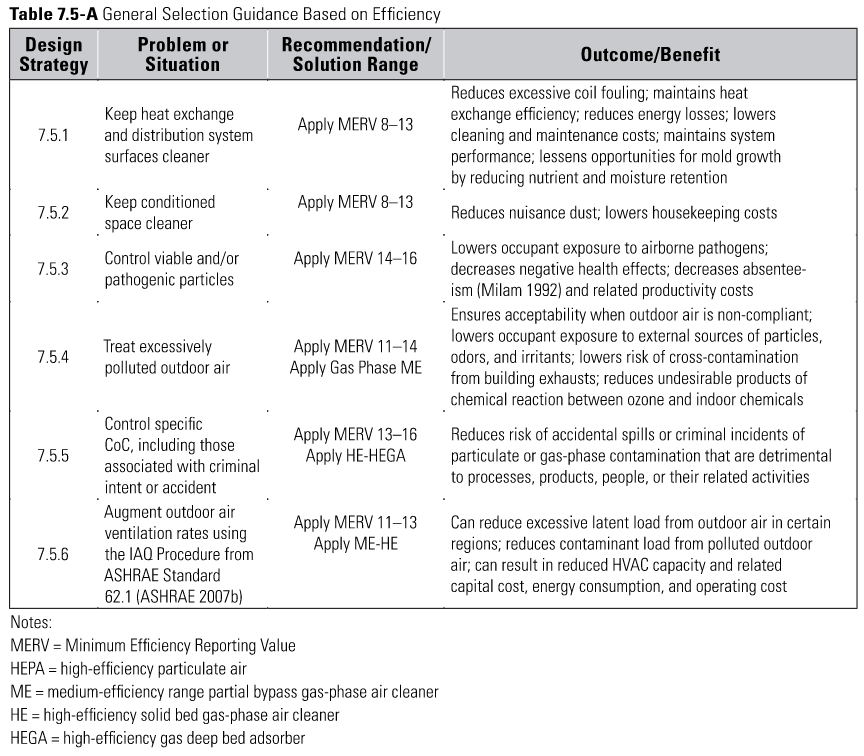
FIGURE 3: ASHRAE Indoor Air Quality Guide, 2009 Table 7.5-A.
Indoor Air: It’s also important to think about the materials and products that are being brought into buildings. Finishes, like paints and coatings, flooring, construction adhesives and sealants, insulation, and furniture all can have negative impacts on IAQ.15,16 These materials can be specified and selected to minimize negative impacts by referencing guidance identified in the materials category of the WELL v2 rating system as well as the low emitting materials credit language in the LEED v4.1 rating system. For example, specifying flooring that complies with VOC limits in CDPH Standard Method v1.2-2017 and furniture that was tested in accordance with ANSI/BIFMA Standard Method M7.1-2011 could significantly reduce indoor sources of pollutants.16
Beyond building materials and finishes, combustion appliances, including water heaters and boilers, produce harmful byproducts, including CO and NO2. Cleaning products and pesticides can bring harmful chemicals into the building.15 Discussions about these items are beyond the scope of this article but should be investigated to further improve IAQ in the building.
Indoor Air Filtration and Air Cleaning: Following existing building assessments completed by Newcomb & Boyd's Healthy Buildings team, recommendations to the owner included modification or replacement of filtration as well as incorporation of various air cleaning technologies. The team's recommendations were in line with ASHRAE Core Recommendations for Reducing Airborne Infectious Aerosol Exposure, most recently updated on Oct. 19,17 and ASHRAE’s Building Readiness Guide.23
ASHRAE recommends using a combination of filters and air cleaners that achieve MERV 13 or better levels of performance for air recirculated by HVAC systems, which is important for several reasons. From a viral transmission perspective, the U.S. Centers for Disease Control and Prevention (CDC) and ASHRAE advise that filtration with a MERV rating of 13 or higher is capable of trapping particles that are similar in size to typical particles that may carry the COVID-19 virus. The spread of COVID-19 occurs primarily through airborne particles and droplets, which can remain suspended in the air for minutes to hours.18 While SARS-CoV-2 is an enveloped virus that is about 0.1 µm in diameter, the virus is primarily transmitted through respiratory droplets with a wide range of sizes, many of which are greater than 0.3 µm.19 As shown in Figure 4, from ASHRAE’s Indoor Air Quality Guide14, filtration with a MERV level of 13 can remove more than 90% of particulate matter that is between 1-10 µm (including PM2.5 and PM10, which are 2.5µm and 10µm, respectively).

FIGURE 4: ASHRAE Indoor Air Quality Guide, 2009, Table 7.5-B.
For a new construction project, designing systems to accommodate the pressure drop associated with MERV 13 filtration is generally not an issue and is becoming standard practice. For existing buildings, the utilization of MERV 13 and other air filtration/treatment within the HVAC system is not always possible due to increased pressure drop and limited HVAC equipment capacities. Depending on the unit size, MERV 13 bag filters could be a feasible option, or perhaps a lower MERV rating coupled with additional air-cleaning devices could be considered.
As it relates to air-cleaning technology, there are several options most clearly outlined and discussed on the Filtration and Disinfection page of the ASHRAE Building Readiness Guide,23 including in-room air purification, UV, electronic air filters, gas-phase air cleaners, and a number of other recommended options. Emerging technologies, including needlepoint bipolar ionization (NPBI), corona discharge, and other ion or reactive oxygen air cleaners are also available; however, ASHRAE’s position on these emerging technologies is that convincing scientifically rigorous, peer-reviewed studies do not currently exist, and, therefore, manufacturer data should be carefully considered. Devices should be safe, and evidence of effectiveness should be clear and readily available from the manufacturer.20 ASHRAE provides more detailed guidance in its Position Document on Filtration and Air Cleaning.21
Long-Term Monitoring of Ventilation and IAQ
Over the life of a building, there are a number of things that will change over time that could affect IAQ, including different owners, operators, tenants, furniture, filters, etc. How can we be sure the IAQ the building was designed and built to have is sustained throughout its entire life cycle? Monitoring of ventilation and IAQ can provide building owners and operators with valuable data to help identify potential issues, discuss corrective action, and maintain good IAQ.
To ensure ventilation rates continue to be maintained throughout the life of the building, it is recommended that outdoor airflow be monitored by the building automation system (BAS). For variable air volume (VAV) ventilation systems, this can be accomplished via an outdoor airflow monitor. For constant volume systems without demand-controlled ventilation (DCV), a current transducer or airflow switch could be utilized. Building operators can then be alerted via an alarm point if outdoor airflow values and/or outdoor air fans vary from the set point. These strategies align with LEED v4 guidance in the Minimum Indoor Air Quality Performance prerequisite.25
Several standards and rating systems have been developed to help guide owners and designers to select the proper IAQ monitoring equipment for their buildings. These rating systems identify thresholds determined by reputable organizations, including EPA, World Health Organization (WHO), and California Office of Environmental Health Hazard Assessment (OEHHA), that should be met for monitored particulates and gases.
The RESET Air Standard, developed by GIGA in 2013, is a sensor-based and performance-driven data standard and certification program for the built environment.22 RESET Air requires monitoring of PM2.5, TVOC, CO2, temperature, and relative humidity throughout the life of the building and also has standards and certifications for the IAQ sensors and monitors themselves, providing owners and designers assurance the selected IAQ monitoring equipment meets GIGA’s rigorous standards.
The rating systems noted in Figure 5 identify IAQ monitoring requirements as well as provide guidance as it relates to acceptable thresholds for each particulate and gas.
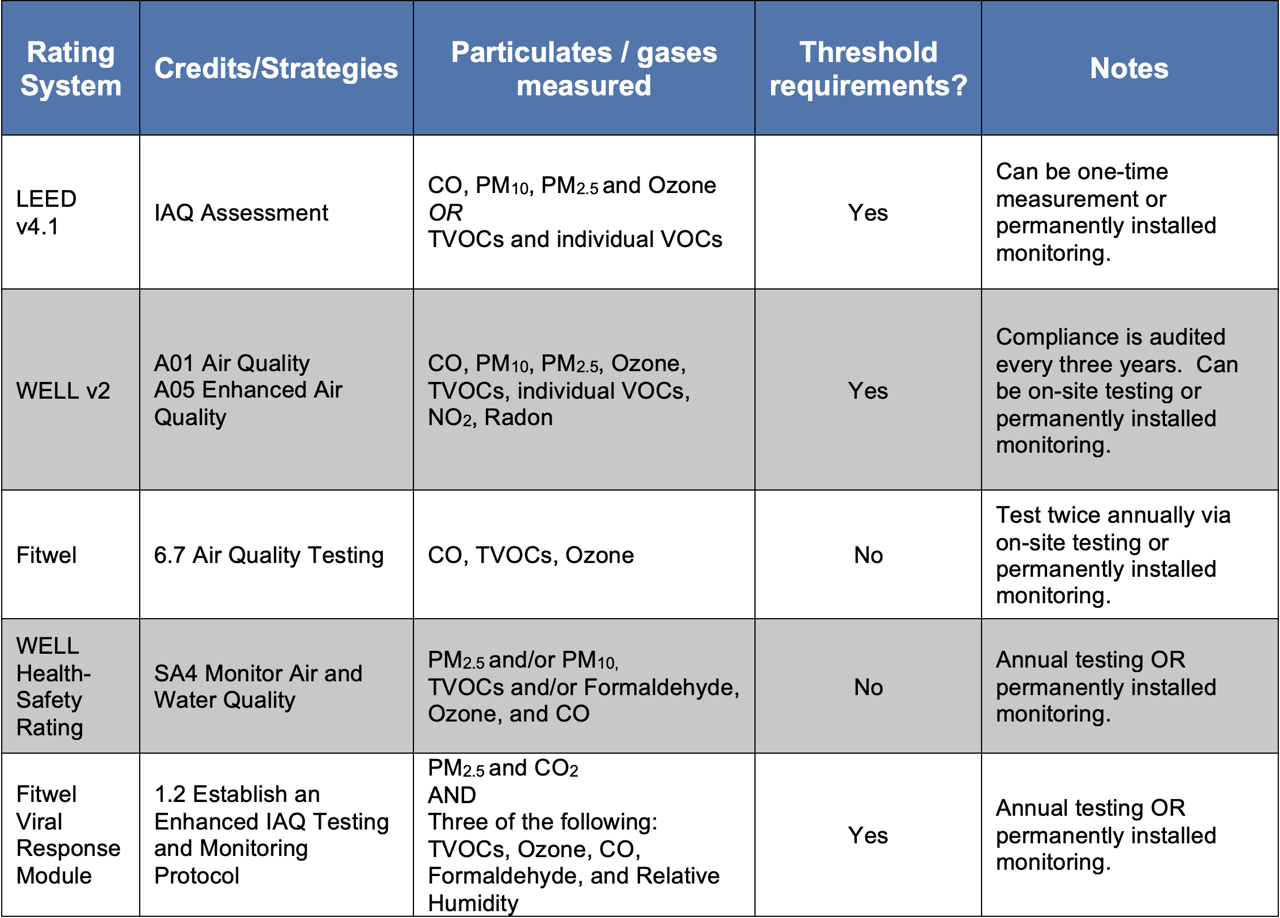
FIGURE 5: Rating systems with IAQ monitoring requirements as well and guidance as it relates to acceptable thresholds for each particulate and gas.
All Hands On Deck
Optimizing IAQ in commercial buildings requires a multifaceted approach that includes the identification of potential sources of pollution in the ambient air around the site, consideration of materials and products that are brought into the building, investigation of new or existing HVAC system design and operation, and development of a strategy for long-term measurement and monitoring. Engaging a mechanical engineer who specializes in IAQ is critical for both new construction projects as well as existing building analysis. The building occupants are the most important assets in any commercial building, and it is critical we prioritize IAQ both from a financial and moral perspective.
References
- “The Impact of Green Buildings on Cognitive Function.” Harvard University Sustainability, https://green.harvard.edu/tools-resources/research-highlight/impact-green-buildings-cognitive-function
- Study 1: Indoor Environmental Quality.” The Impact of Buildings on Cognitive Function, Carrier, 2021, https://thecogfxstudy.com/study-1/
- “Study 2: Buildingomics.” The Impact of Buildings on Cognitive Function, Carrier, 2021, https://thecogfxstudy.com/study-2/
- “Study 3: Global Buildings.” The Impact of Buildings on Cognitive Function, Carrier, 2021, https://thecogfxstudy.com/study-3/
- “Fitwel Viral Response Module.” Fitwel, Center for Active Design, 2020, https://www.fitwel.org/viral-response-module/
- “A03 Ventilation Design.” WELL v2 Standard, International WELL Building Institute, Q4 2021, https://v2.wellcertified.com/wellv2/en/air/feature/3
- “A06 Enhanced Ventilation Design.” WELL v2 Standard, International WELL Building Institute, Q4 2021, https://v2.wellcertified.com/wellv2/en/air/feature/6
- “Minimum Indoor Air Quality Performance.” LEED v4.1 Rating System, United States Green Building Council, 2021, https://www.usgbc.org/credits/new-construction-core-and-shell-schools-new-construction-retail-new-construction-data-cen-10?return=/credits/New Construction/v4.1/Indoor environmental quality
- “Enhanced Indoor Air Quality Strategies.” LEED v4.1 Rating System, United States Green Building Council, 2021, https://www.usgbc.org/credits/new-construction-core-and-shell-schools-new-construction-retail-new-construction-hospitality?return=/credits/New Construction/v4.1/Indoor environmental quality
- “SA1 Assess Ventilation.” WELL v2 Standard, International WELL Building Institute, Q4 2021, https://v2.wellcertified.com/health-safety/en/air and water quality management/feature/1
- “Outdoor Air Quality.” United States Environmental Protection Agency, May 30, 2019, https://www.epa.gov/report-environment/outdoor-air-quality
- ASHRAE, Standard 62.1-2019: Ventilation for Acceptable Indoor Air Quality, Section 6.1.4 Outdoor Air Quality, 2019.
- “Interactive Map of Air Quality”, AirNow, 2021, https://gispub.epa.gov/airnow
- ASHRAE, Indoor Air Quality Guide: Best Practices for Design, Construction and Commissioning, 2009
- “Introduction to Indoor Air Quality.” United States Environmental Protection Agency, September 24, 2021, https://www.epa.gov/indoor-air-quality-iaq/introduction-indoor-air-quality#sources
- “Low Emitting Materials.” LEED v4.1 Rating System, United States Green Building Council, 2021, https://www.usgbc.org/credits/new-construction-core-and-shell-schools-new-construction-retail-new-construction-data-38?return=/credits/New Construction/v4.1/Indoor environmental quality
- “Core Recommendations for Reducing Airborne Infectious Aerosol Exposure.” ASHRAE Epidemic Task Force, October 19 2021, https://www.ashrae.org/file library/technical resources/covid-19/core-recommendations-for-reducing-airborne-infectious-aerosol-exposure.pdf
- “Scientific Brief: SARS-CoV-2 Transmission.” Centers for Disease Control and Prevention, May 7, 2021, https://www.cdc.gov/coronavirus/2019-ncov/science/science-briefs/sars-cov-2-transmission.html
- “SARS-CoV-2 (COVID-19) by the Numbers.” US National Library of Medicine and National Institutes of Health, April 2, 2020, https://www.ncbi.nlm.nih.gov/pmc/articles/PMC7224694/
- “Filtration/Disinfection.” ASHRAE, 2021, https://www.ashrae.org/technical-resources/filtration-disinfection
- ASHRAE, Position Document on Filtration and Air Cleaning, February 2, 2021
- RESET Air, RESET, 2021, https://www.reset.build/standard/air
- ASHRAE, ASHRAE Epidemic Task Force Building Readiness Guide, April 27, 2021
- “Increased Ventilation Above Code.”, ASHRAE Building Readiness Guide, 2021. https://www.ashrae.org/technical-resources/building-readiness#increasedvent
- “Minimum Indoor Air Quality Performance.” LEED v4 Rating System, United States Green Building Council, 2021, https://www.usgbc.org/credits/new-construction/v4-draft/eqp1?return=/credits/New Construction/v4/Indoor environmental quality

Danna Richey, P.E., WELL AP, RESET AP
Danna Richey is the Health Buildings Division Leader at Newcomb & Boyd LLP. With 11-plus years of experience as a mechanical engineer and consultant for sustainable and healthy buildings, she is knowledgeable in building energy analysis, ventilation, IAQ, and sustainable and healthy building consulting. Richey is proficient in the requirements for health- and wellness-related building certifications and ASHRAE energy standards. In 2020, Richey was selected as one of Engineered Systems magazine’s Top 20 to Watch: Women in HVAC.
Lead photo [4FR][E+] via Getty Images